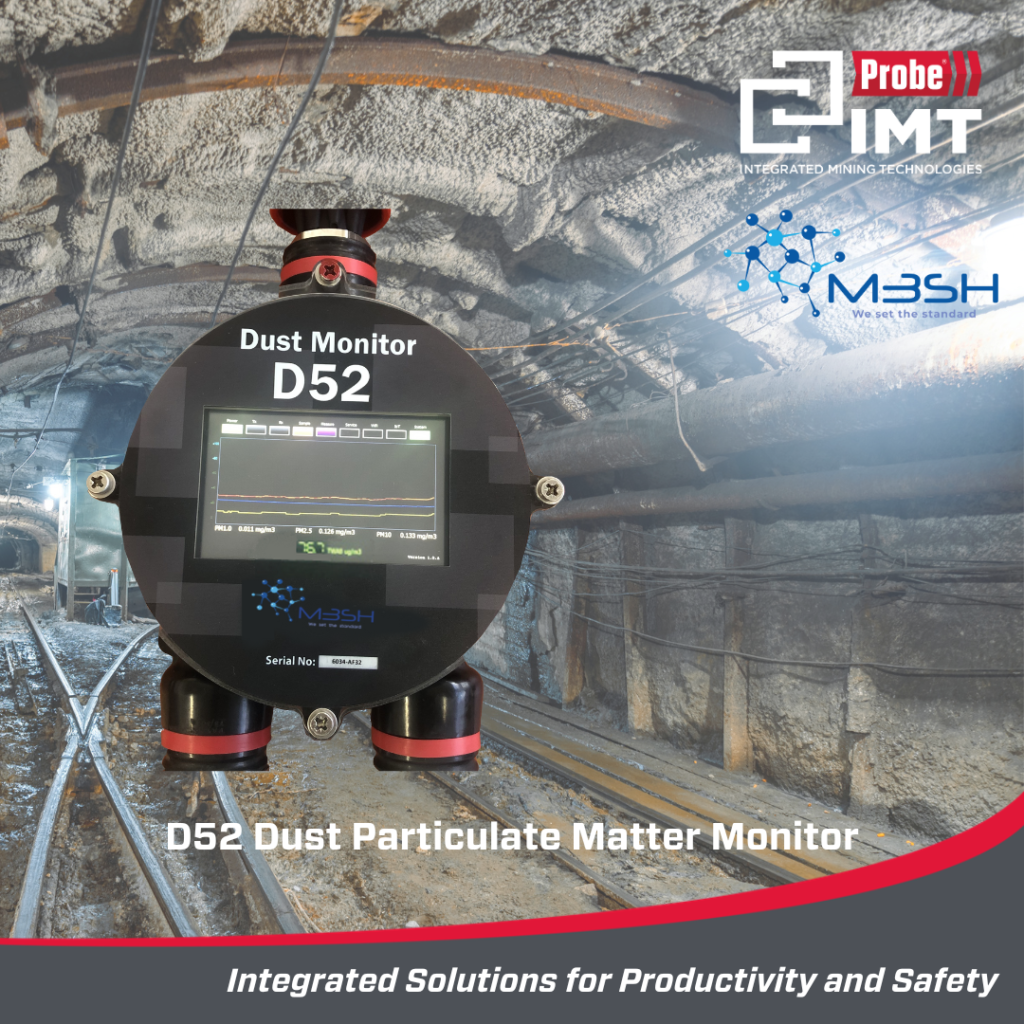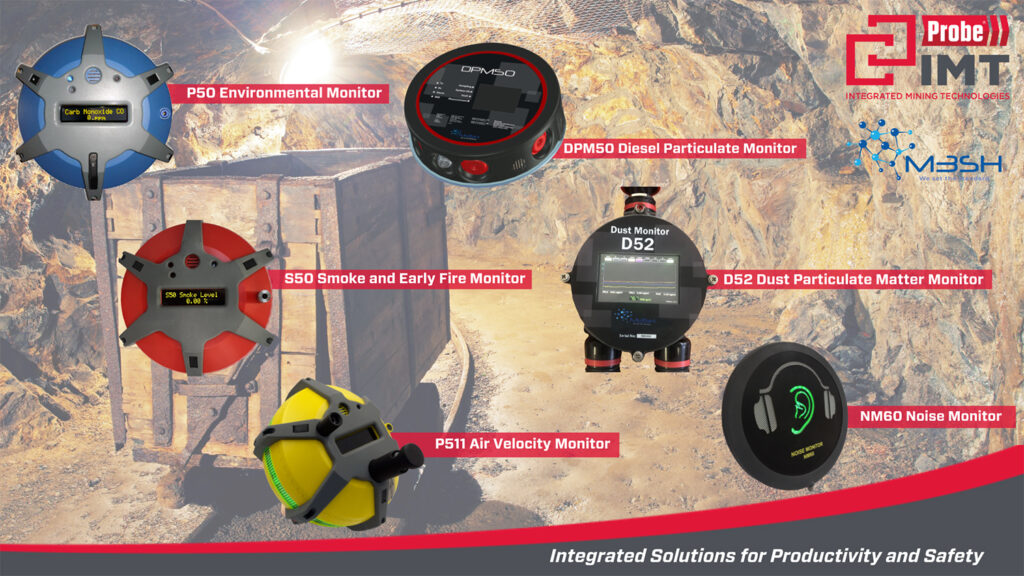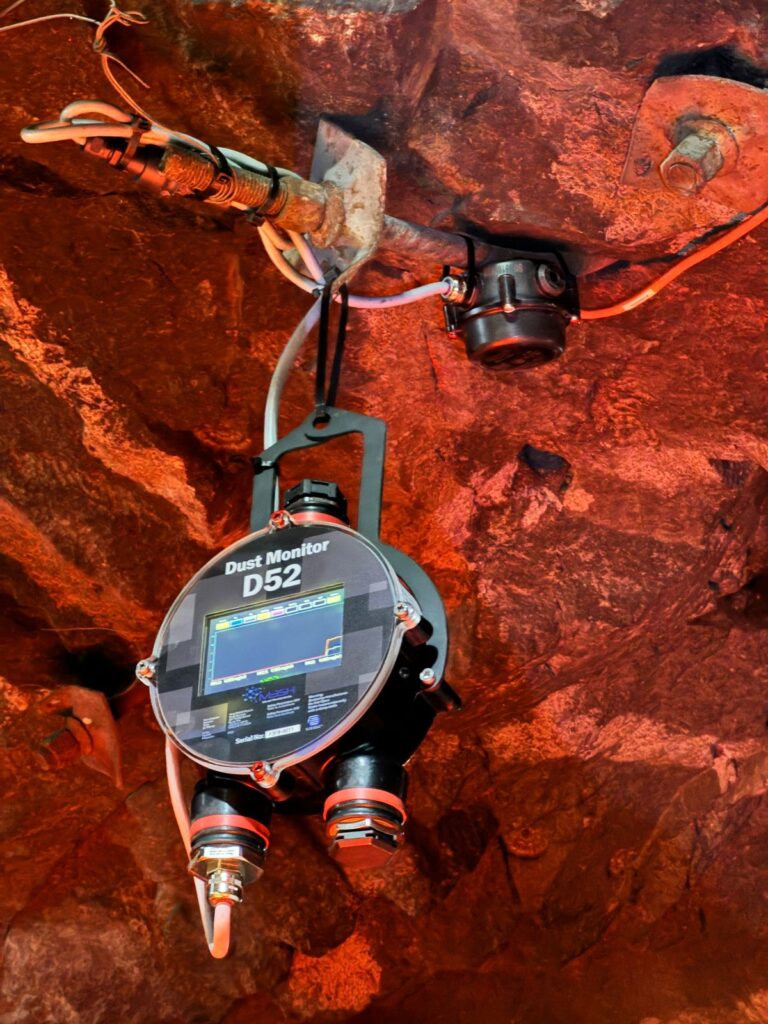Probe IMT, in collaboration with Ningi Services and M3SH Technology, has installed a secure 5G network and a range of M3SH real-time sensor technology at the Impala Bafokeng mine in Rustenburg as part of projects with the Mandela Mining Precinct to improve mine safety and productivity and advance digital mines. Real-time sensor monitoring has been recognised by the Department of Minerals and Energy as an essential tool for compliance with mandatory guidelines on monitoring, managing, and reporting exposures to health hazards.
“This collaborative project harnesses the expertise of various companies to drive a significant leap forward in digital transformation, mine safety, and technology interoperability, above and below ground,” says Gert Roselt, CEO of Probe IMT. “We’re excited to be involved in the journey from sensor data collection to the Open Data Analytics Platform (ODAP) technology. Innovative technology enables rapid response by transmitting secure real-time data on equipment health and environmental conditions from the last mile underground to the surface, ready for analytics tools.”
Specifically designed for the mining industry, M3SH’s 5G solution facilitates the secure real-time sensor technology that enhances operational efficiency and safety. By providing ultra-fast, low-latency connectivity, the 5G network allows for immediate data transmission from the advanced sensors to the surface, facilitating detailed data analysis of underground conditions, including dust levels, diesel particulate matter, toxic gas emissions, and fire detection.
The suite of M3SH Technology real-time environmental monitoring, detection and control solutions implemented by Probe IMT include:
· P50 Environmental Monitor: This device offers real-time monitoring of a variety of environmental parameters. The P50 is an advanced multi-functional, sensor – rich device that accurately tracks work environment conditions. This fixed installation monitor is designed to operate in extreme and hazardous environments such as explosives and gaseous atmospheres.
· S50 Smoke and Early Fire Monitor: The S50 is a fixed installation area monitor developed with intelligent sensing technology, capable of discriminating between genuine fire conditions and deceptive emission sources such as hot works, welding, diesel fumes, and metal burning.
· D52 Dust Particulate Matter Monitor: The D52 Dust Monitor uses laser sensing technology to count and measure particles below 10 micrometres. The D52 can be implemented to activate an automated ventilation or dust suppression system — preventing worker exposure to unhealthy dust levels.
· DPM50 Diesel Particulate Monitor: The monitor measures particulate matter (PM) emissions from diesel engines. These emissions are a significant concern due to their potential health and environmental impacts.
· P511 Air Velocity Monitor: Ideal for ensuring optimal ventilation, the P511 measures air velocity in real-time. With configurable audible and visual indications; the P511 is a perfect solution to assist with air flow management.
· Noise Monitoring devices: M3SH’s noise monitors are designed to continuously measure noise levels. With a broad frequency range and high accuracy, these devices help maintain a comfortable and safe noise environment in mining sites.
In addition to environmental monitoring, the project includes motor protection detection units to safeguard motors on critical equipment like pumps and conveyor belts from overcurrents and overloads. “M3SH motor protection technology goes beyond traditional safeguards, employing state-of-the-art monitoring and diagnostic capabilities to ensure the longevity and reliability of critical machinery. This real-time insight enables predictive maintenance, reducing downtime, and optimising resource allocation,” says Roselt. Finally, the project involves PDS and missing miner testing to ensure the utmost safety and operational efficiency in the mining environment.
Probe IMT is collaborating with multiple technology partners within the project to ensure the data can be efficiently reported and analysed. “Partnership and collaborative effort in essential to drive digital transformation in the mining industry,” Roselt says.
The Council for Scientific and Industrial Research (CSIR) contributes innovative last mile connectivity solutions, while Cybarete (a Stellenbosch University spin-off) offers edge-level processing and data orchestration capabilities. Esri provides an analytics platform, The Minserve Group coordinates an Open Data Analytics Platform. Digital Twin (Pty) Ltd has developed tracking tools including the Mine Intelligence Engine and Sensor Analytics Application (DX BC Tool). The tool uses Excel based calculations and reporting while the app tracks the performance of implemented initiatives against expected benefits. The web-based sensor analytics platform processes data, providing digital initiative evaluation (financial/non-financial) at the mine or across several mines.
“In today’s rapidly evolving industrial and mining landscape, technology is reshaping every aspect of our work environment,” says Roselt. “By harnessing the power of advanced digital technologies, we can help mines to enhance operational efficiency, achieve compliance and, most importantly, protect lives.”





